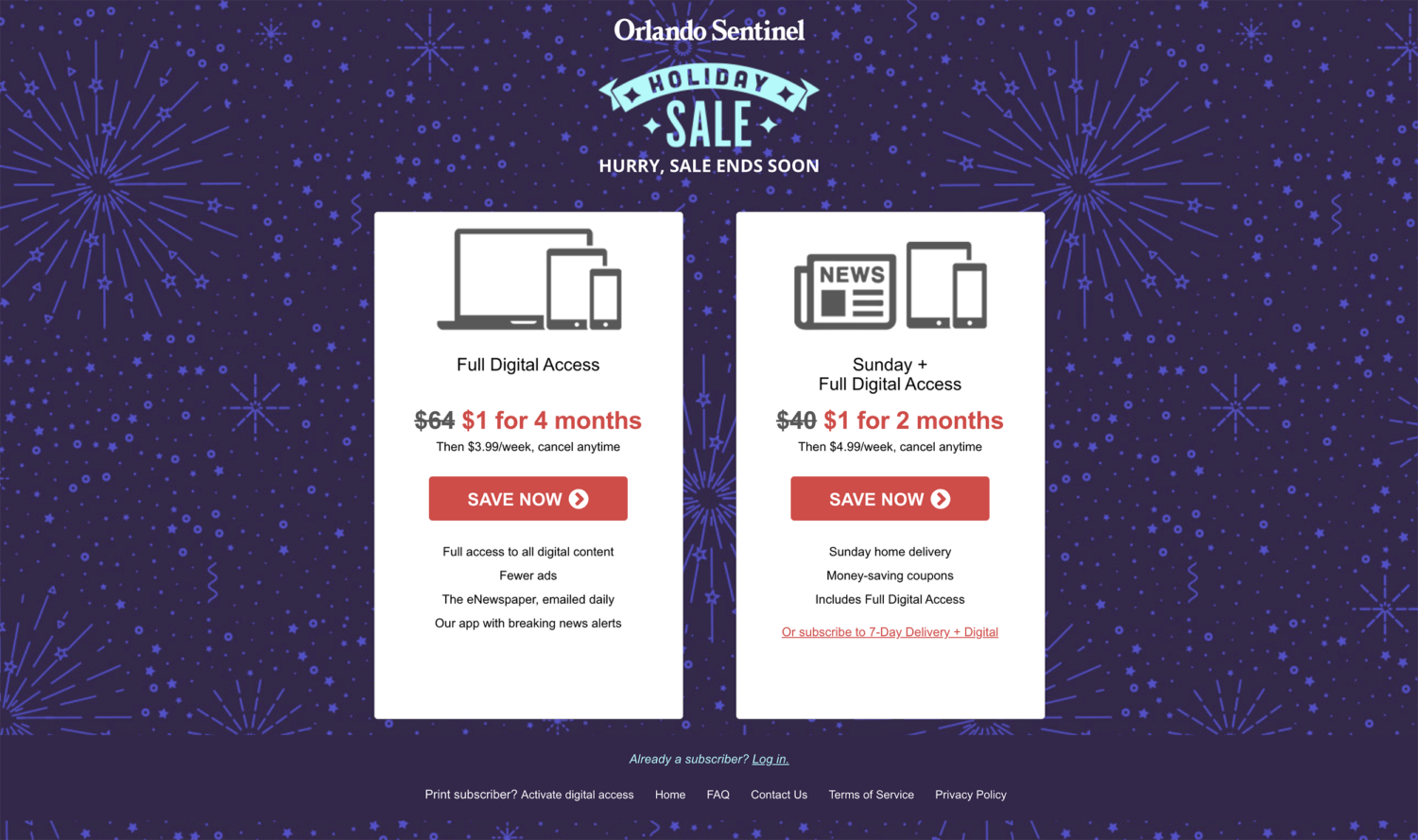This is an abridged version of an article on Northwestern University’s Medill Local News Initiative website.
The pandemic and other major news events have helped boost digital subscriptions dramatically at local news outlets in 2020, with a new industry analysis putting the over-all increase at about 50% in a year’s time.
But that encouraging news comes with questions for 2021:
- Can local news organizations keep those new subscribers and attract more if the news cycle quiets?
- Can legacy outlets establish brand affinity in an often chaotic and crowded web world?
- Can newsrooms cope with staff cuts and redefine their mission to match their ability to accomplish it?
One question answered in 2020 was whether local news outlets could make the shift online from an advertising model to a reader-revenue model. It appears they are doing just that.
Mather Economics, an Atlanta-based consulting firm that handles subscription data for major North American news chains, conducted an analysis of news outlets in 138 media markets of various sizes. It found that digital circulation was up 51.2% from November 2019 to November 2020 while print circulation was down 12.9%. Mather also found that 25.6% of all subscription starts in 2020 were digital. This year’s increase in digital subscriptions is greater than in previous years, Mather said.
Recent disclosures by major news chains support that trend.
The largest U.S. local news chain, Gannett, reported paid digital-only subscribers of 1.029 million in the third quarter of 2020, a 31.1% increase year-over-year.
Tribune Publishing said digital subscribers reached 427,000 at the end of the third quarter, compared to 314,000 a year earlier — a jump of 36%. Colin McMahon, editor-in-chief at the Chicago Tribune and chief content officer at Tribune Publishing, said in an interview: “Chicago, Baltimore, the Floridas all did very well during this period. New York (Daily News) obviously came from a much smaller base because it didn’t have a big digital subscription base, so it’s been growing crazily, but from a smaller base. Then the other ones are just steady growth.”
The Los Angeles Times said paid digital-only subscriptions rose from 168,061 in January 2020 to 256,938 in December 2020 — a surge of 52.8% in 11 months. Like other outlets, the Times’ numbers were pumped up by news about COVID-19, the election and social justice protests. But Los Angeles also had other big stories: major wildfires, the death of Kobe Bryant and pro sports championships in both basketball and baseball.
One key question is whether 2020 has been a trend-setting year or an aberration.
“This year has been an epic train wreck in so many ways,” said Tim Franklin, head of Northwestern University’s Medill Local News Initiative. “But it’s highlighted the essential role of local news and information in our communities. And the demand for local news this year came at the same time that many news organizations were aggressively pivoting to a reader revenue business model. The result has been a spike in digital subscriptions, especially at some larger regional outlets.”
But that requires major operational changes, said Franklin, who is senior associate dean and John M. Mutz Chair in Local News at Northwestern’s Medill School of Journalism, Media, Integrated Marketing Communications.
“Success with this strategy long-term means news outlets need to evolve, and that’s now happening at many places,” he said. “They need to do things like revisit their organizational structures, and consider shifting resources to marketing, social media engagement and newsletters — the things that research shows drive subscriptions. And they need clear, actionable insights into the interests and habits of their paying readers so they can retain the ones they’ve added this year.”
In its analysis, Mather Economics found that the retention rate for print and digital subscribers is up this year. The rate was 63.2% for 2019, and the annualized rate for 2020 so far is 70.9%.
“We see a lot of companies dedicating full-time positions to subscriber retention,” Local Media Association CEO Nancy Lane said. “It’s so much easier to hold onto a subscriber than to get a new one.”
The Boston Globe works hard to keep the paying customers engaged, said Jason Tuohey, the Globe’s managing editor for digital. That includes about 30 newsletters, plus events, some of them subscriber-only. Tuohey cited a recent online event in which the Globe’s television critic discussed “The Crown.” It drew about 1,000 subscribers.
“We do want you to feel like you’re not just getting the daily news but you’re buying into something bigger,” said Tuohey, who added that the Globe’s approximately 220,000 digital-only subscribers represent “a sizable jump over where we were a year ago.”
Tribune Publishing’s data analysis has found that new digital subscribers were slightly more interested in local news than previous subscribers were or anonymous website visitors were. It also found “a little less interest in some of our topics that historically have driven a lot of subscriptions — sports, Bears, food, dining, that kind of thing,” McMahon said.
Josh Brandau, chief revenue officer at the Los Angeles Times and San Diego Union-Tribune, said people who subscribed as the pandemic emerged “may be a little more fickle and price-sensitive than the average subscriber that we get,” so communication with them about the variety of offerings is important.
Building brand affinity in a digital environment takes time, said Mariana Rodriguez, the Times’ vice president of consumer marketing.
“You have more options nowadays,” she said. “You really need to communicate and build that trust and that relationship in saying, OK, of these four options or even two options or six options that you have, why am I going to decide to subscribe to the LA Times instead of somebody else. I think nurturing that relationship does take longer right now.”
Asked about job cuts in the industry, the Tribune’s McMahon said the ability to serve an audience and gain subscribers isn’t always determined by staffing levels. Rather, he said, it should be determined by whether newsrooms’ mission is in sync with their customers’ interests.
“The subscribers care about and support the work that the newsroom cares about and wants to do,” McMahon said. “It doesn’t line up perfectly and it never will, (but) I don’t think there’s a wide gulf.”







